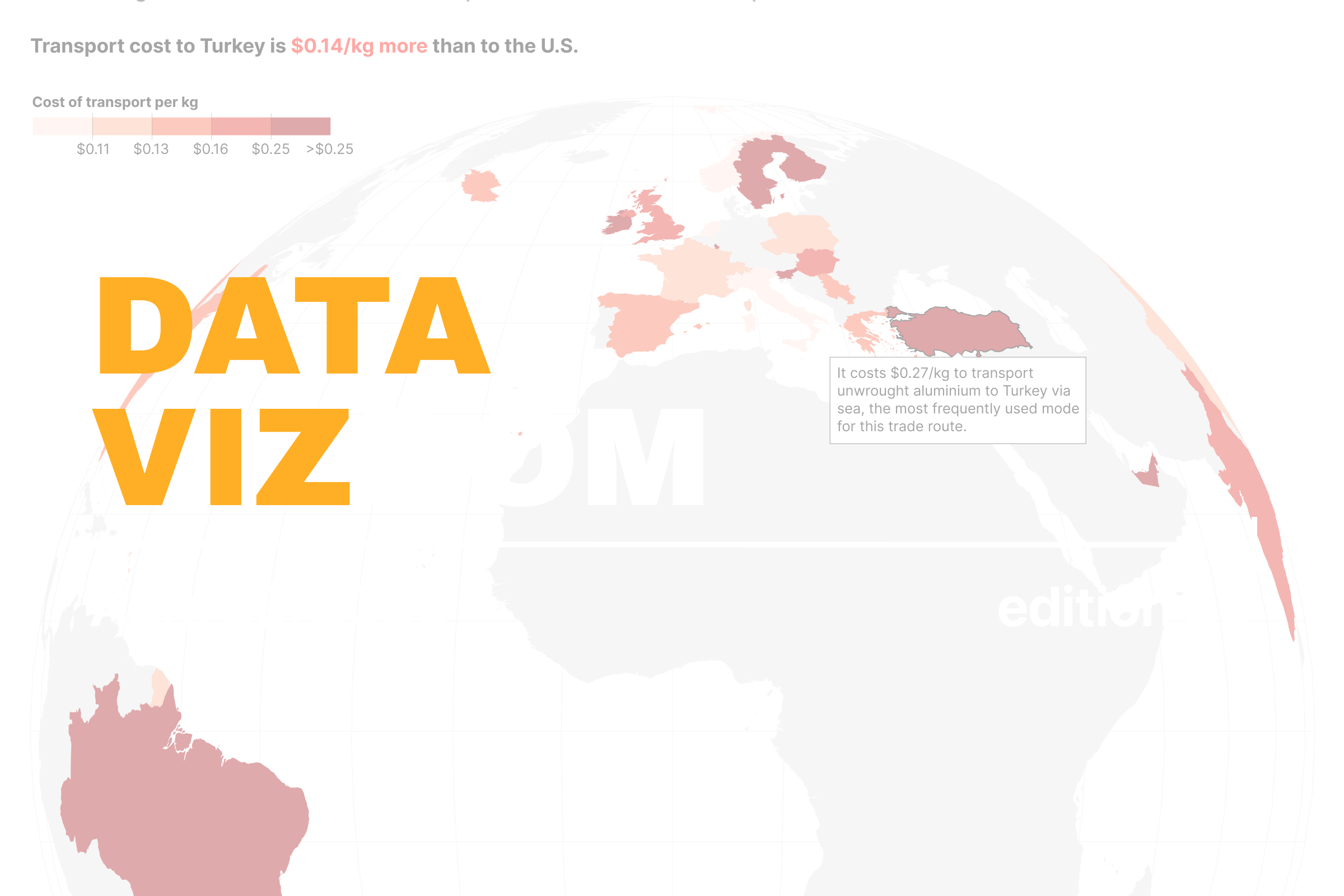What better way to understand concepts big and small than through data visualizations? In this blog series, we explore timely themes in economics and transportation, drawing on data from the SLGL dataHub.
With Aïchata Koné
The discombobulation caused by the imposition of U.S. tariffs has disrupted established trade patterns for companies around the world. To manage the impact, firms have sought opportunities outside the U.S., with their success depending on the competitiveness of their products in alternative markets. While this competitiveness hinges on many factors, transport costs are a key component.
To investigate this, we explore the cost of moving Canada’s largest exports to various global markets. The visualization below shows the per-kilogram transport cost to a chosen product’s markets, based on the primary mode used on that trade route (by volume). Countries are coloured by quantile with lighter shades representing markets that are cheaper to reach and darker shades indicating higher transport costs. Hovering over a country reveals the primary mode used and the cost difference between shipping to the U.S. and the selected market.
Transport costs vary depending on the mode, which in turn depends on the product, volume, and distance to the destination market. For instance, ocean freight typically offers lower costs per kilogram for bulk shipments over long distances, while air freight is faster but significantly more expensive. Truck and rail are essential for moving goods within Canada, as well as across the U.S. border. These differences matter, as even a modest cost advantage can influence a firm’s ability to compete in distant markets, particularly for price-sensitive products.
Understanding these cost dynamics is essential for firms and policymakers navigating a shifting trade landscape. As demand on transportation networks shifts, investment will need to follow to ensure Canadian firms have access to a competitive transportation system for reaching global markets. By revealing how transport costs shape export potential, we gain insight into which markets offer the best opportunities for Canadian commodities beyond the U.S.
Help us make this series even better! We would love to hear your thoughts and suggestions. Reach out to Bilal Siddika on LinkedIn or via email.
